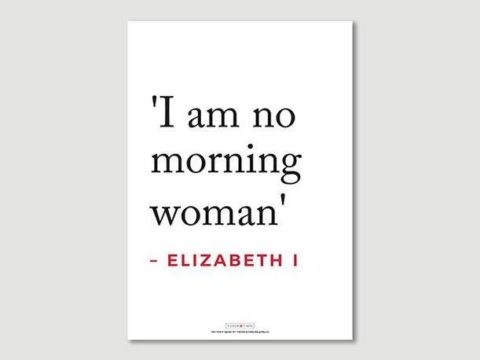Edward Seymour: Life Story
Chapter 7 : Religious Reform
Whilst Protestant tendencies had had to be carefully hidden during Henry VIII’s reign, with Somerset now in charge of the government, and free to appoint whatever tutors he thought suitable for the king, the church reform party was able to move swiftly to take England from the doctrinally Catholic state of Henry VIII’s reign towards Calvinist Protestantism. The first moves were, in some sense, publicly driven. London had always had a far higher proportion of radicals than other parts of the kingdom, and desecration of images and religious art broke out in some of its churches. This brought down a reprimand from the council, but only on the basis that the congregations had run ahead of authority. Gardiner, Bishop of Winchester, and a stalwart of the conservative faction in Henry VIII’s reign complained of the iconoclasm, and wrote repeatedly to Somerset, urging him to make no changes in religion until Edward was of age. Gardiner had been excluded from the council as constituted under Henry VIII’s will, and Somerset had no mind to appoint him to the new council. Nor was he willing to heed Gardiner’s words.
Nevertheless, until Parliament could be called, there was no official change in religion. Edward’s chapel had crucifix and candles, and he attended Mass daily, and four times on Easter Day. The death of François I was marked with the traditional obits and other manifestations of Catholic practice, including a solemn dirge at St Paul’s Cathedral. Evangelicals, however, were openly deriding the Mass – referring to the Host, which Catholics believed was actually the Body of Christ as ‘jack-in-the-box’ and similar contemptuous terms. This was against the law, but no efforts were made to punish offenders.
One of the duties that had fallen to Henry VIII as Supreme Head of the Church in England had been the instigation of visitations – previously the duty of the bishops. A visitation was an inspection of individual parishes, to ensure that the prescribed rules of religion were being followed. Such a visitation was instigated by Somerset in summer 1547, to check that the injunctions published on 31st July of that year were being followed. Although these injunctions contained much of the material from those of 1538, more radical elements were introduced – rosary beads, parish processions and bell-ringing were all banned and Archbishop Cranmer included a series of homilies to be read. The only candles permitted were those on the altar and any images that were considered to be more than decorative, that is, any that gave rise to veneration, were to be removed. The visitations unleashed a wave of iconoclasm – statues and stained-glass were smashed, wall-paintings covered over, many relics that had survived the previous reign were tossed onto bonfires. The council was concerned about the lawlessness, and tried to rein it in, with instructions merely to cover images over, but the more vehement reformers continued with their work.
Parliament was called, and the first Act it debated related to religion. Entitled the Act against Revilers of the Sacrament and for Communion in both kinds, it did not opine on the nature of the eucharist. Consequently, in law, the service remained as in Henry’s reign – a Catholic Mass. This Act was followed by more openly Protestant legislation – the Chantries Act, which dissolved all chantries – that is, religious establishments set up privately for the purpose of praying for the souls of the dead – anathema to Protestants. The Act suggested that the funds would be used for better purposes than the ‘vain opinions of purgatory…’ such as primary education, the endowment of the universities or succour for the poor, but the funds quickly disappeared into government spending on the ongoing military campaign in Scotland. That poverty was an issue that the government wanted to tackle was made evident in the Vagrancy Act – the unemployed who refused work could be enslaved for two years, and branded with a V, whilst there was to be a weekly collection in each parish for poor-relief.
Continuing with the reform of religion, the 1538 Act of Six Articles was repealed, which consequently allowed the reading of the bible in English to once again be legal for those under the status of gentleman. Other literary matter was soon pouring forth in support of Protestantism – some thirty tracts against the Mass were published in 1548, including two by Somerset’s own chaplain, William Turner, whilst pro-Catholic tracts were suppressed.
In 1548, the council issued injunctions to remove all images in churches. The royal chapels were the first to be stripped, with all gold ornaments, images and even covers of books being melted down. This was followed by a change to the eucharist service – bread and wine were to be received by both laity and clergy (previously, the laity only partook of the bread). Part of the service was also to be delivered in English.
For most of the population, the destruction of the chantries and the removal of the traditional sensory aspects of religion – candles, beads, processions, blessing of the crops, and so forth was the moment when the Reformation first impinged on their daily lives. Yet there was no massive groundswell of insurrection, with most parishes quiescent, other than in Cornwall, where a mob at Helston stabbed to death the commissioner tasked with closing the local chantries. The disturbance was quashed, and the council forbade any unlicensed preaching, whilst licensed preachers were to use Cranmer’s homilies.
In the late autumn of 1548, a new prayer-book was brought before Parliament. Largely the work of Cranmer, it was not significantly different from the Catholic liturgy, being more a translation than a transformation. Its changes were more exclusions of previous practice, such as the elevation of the bread and wine, and the reduction of saints’ days, rather than the introduction of new theology. The more radical reformers thought it did not go far enough, but accepted it as a staging post on the way to God’s kingdom. Cranmer himself was eager to go further, having by now (if he had not already done so during Henry’s reign) concluded that the doctrine of transubstantiation was wrong. Orders went out that, from Whitsunday 1549, which was 9th June, no service other than the new Book of Common Prayer, as it was entitled, was to be used in English churches.



